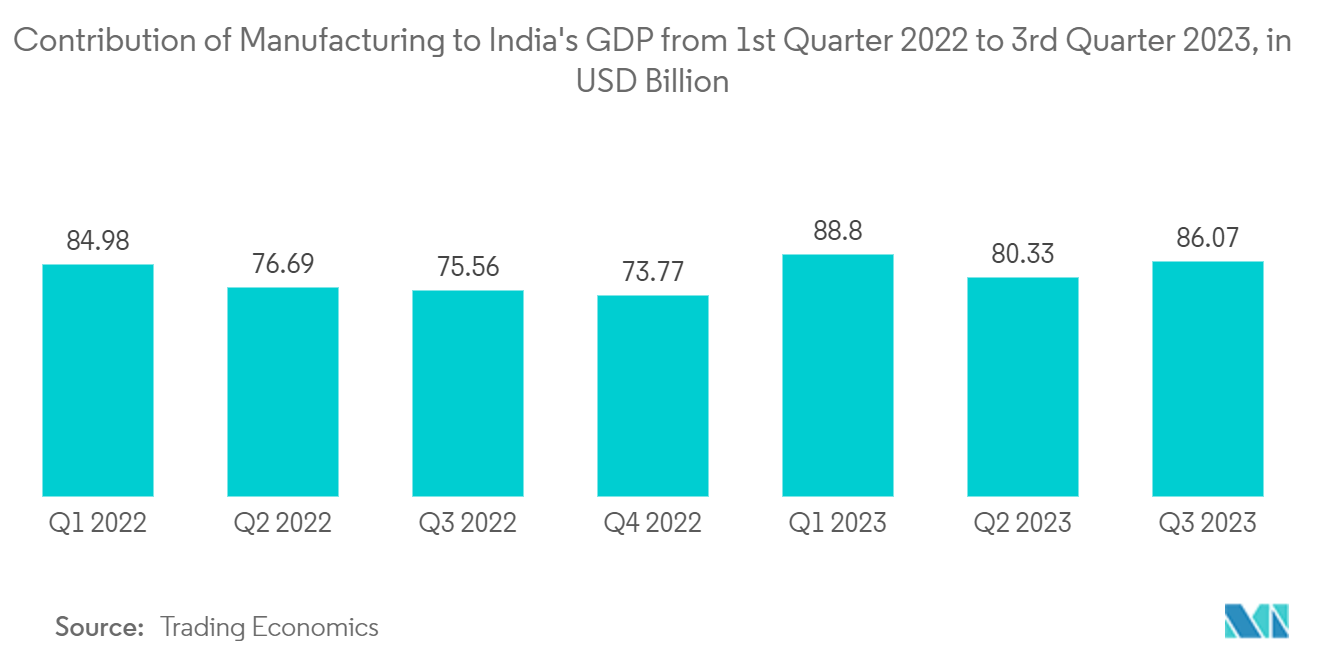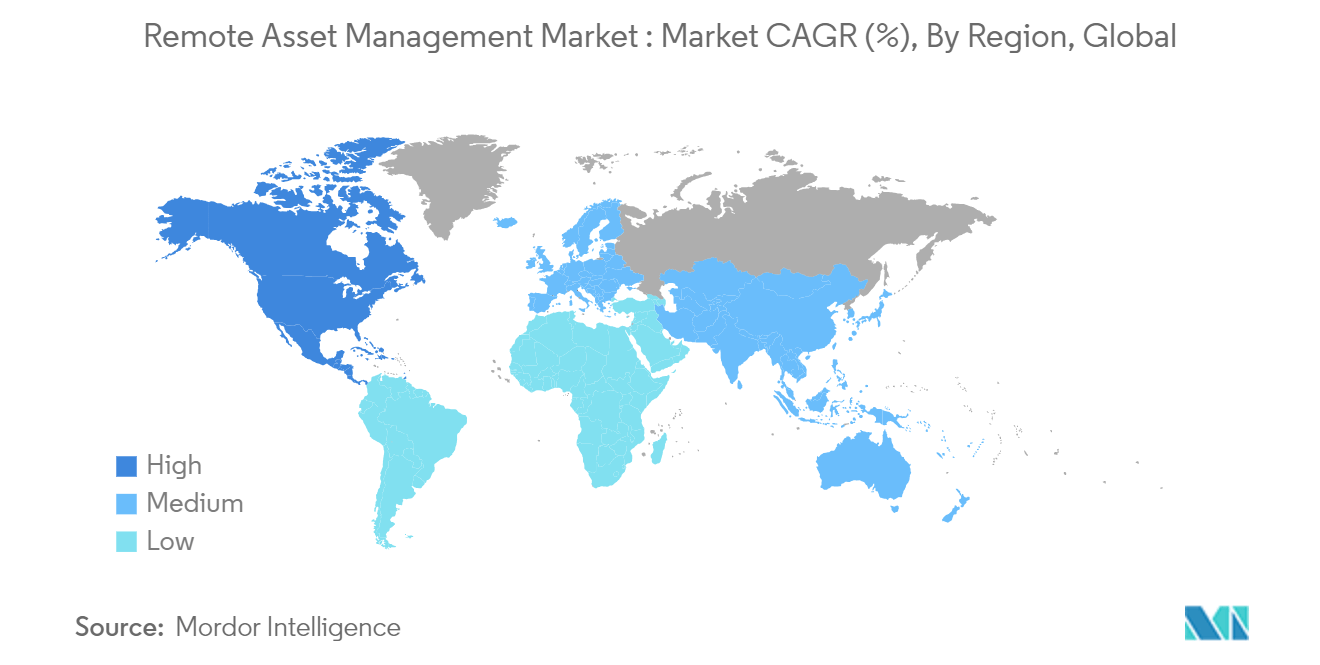Market Trends of Remote Asset Management Industry
Manufacturing Industry is Expected to Hold Prominent Share of the Market
- The manufacturing industry increasingly turns to remote asset management solutions to optimize production, reduce costs, and improve efficiency. Remote asset management involves using sensors and other remote monitoring technologies to track the performance of equipment and machinery from a central location, enabling real-time analysis and decision-making. This technology can be instrumental in the manufacturing industry, where downtime and maintenance costs can be significant issues.
- Some benefits of remote asset management in the manufacturing industry include better visibility into operations, reduced downtime and maintenance costs, and improved safety and compliance. Some companies use digital twin technology to remotely monitor assets and enhance predictive maintenance and overall equipment effectiveness.
- Examples of solutions in this area include GE Digital's Asset Performance Management software, IBM's Maximo Application Suite, and remote asset monitoring solutions offered by companies like Birlasoft. In addition, industrial manufacturers are investing in zero-touch remote asset management solutions to enable safe, contactless monitoring and maintenance of their equipment and machinery.
- Moreover, recently, inMotionNow announced the acquisition of Lytho,an (DAM) platform provider. Lytho's digital asset management capabilities, content templating automation, and customizable brand portals complement inMotionNow's creative workflow platform, inMotion ignite. In order to plan, produce, share, store and publish content, both companies will provide a central and easily managed platform. Lytho has customers in the financial, manufacturing, and automotive industries.
- According Trading Economics, During the third quarter of 2023, the contribution of India's manufacturing industry to the country's GDP was valued at over 85 billion USD This was an increase compared to the previous quarter, but still a much higher value than the third quarter of 2020, when the value decreased due to the coronavirus (COVID-19) pandemic. India's construction and manufacturing industries were among the worst hit then. But the manufacturing industry recovered quickly and reached pre-crisis level again after one quarter.

North America is Expected to Hold Major Share
- North America is estimated to hold the highest remote asset management market share. The high adoption of advanced technology, the presence of advanced telecommunication networks for information sharing, and the availability of a skilled workforce are some factors which are driving the growth of the remote asset management market in North America.
- In addition, the growth in connected devices is expected to further propel the market for remote asset management. For instance, according to Cisco, the United States is expected to have the highest average per capita of devices and connections by 2023.
- Fleet managers, executives, and other mobile business professionals are achieving value by investing in fleet tracking technology, according to the Verizon Fleet Technology Trend Report, which includes surveys conducted by more than 700 fleet managers, executives, and other mobile business professionals in the United States.
- The 2021-2024 Digital Operations Strategic Plan (DOSP), launched recently, sets the strategic direction for the Canadian government's digital ambitions across services, information, data, IT, and cybersecurity. The DOSP consolidates six strategic themes: IT, digital identity, and institution transformation. The initiative by the government shows the importance of digital transformation, which creates a need for the storage of digital assets produced during the implementation.
- Similarly, Adobe launched a new asset management tool, Adobe Experience Manager Assets Essentials. The first tool to integrate this new experience, Adobe Journey Optimizer, has been released as well. The launch responds to the demand for digital content and the improvement of the customer experience.The launch is in response to the push towards digital content and improving customer journeys. Further, artificial intelligence remote asset management solutions Artificial intelligence (AI) has been increasingly used in remote asset management solutions to improve operational efficiency, reduce downtime, and minimize operational costs.


